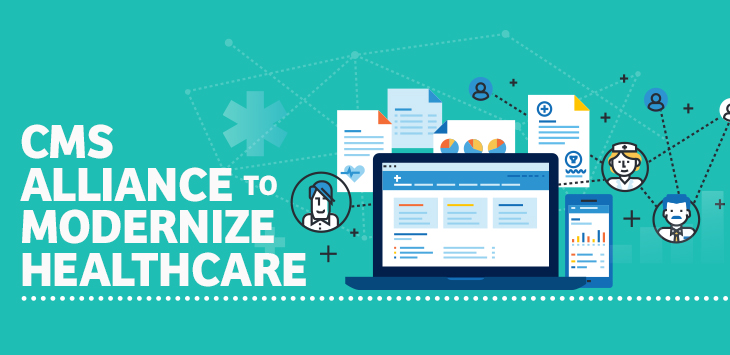What Work Can the "Health FFRDC" Support
The work that can be supported by the Health FFRDC is required to align with your strategic goals and objectives as well as be outcome based. The Health FFRDC is intended to support the agency's core mission to enable providers to deliver better health care to beneficiaries at a lower cost, and the broader HHS mission to strengthen health care, advance scientific knowledge and innovation, advance the health, safety and wellbeing of the American people, and ensure efficiency, transparency, accountability and effectiveness of HHS programs.
The CMS' Alliance to Modernize Healthcare FFRDC is able to provide strategic, technical, health domain and program management assistance to deliver the necessary products and services in the following seven broad task areas:
Task Area 1: Strategic and Tactical Planning and Analysis
- Assist with planning and development of future program policy
- Collaborate on the development and advancement of new legislative initiatives and improvement
- Support innovation initiatives
- Assist with managing and developing long term strategic plans
- Provide analytical support and information to help establish goals and direction
- Conduct special studies
- Analysis of enterprise-wide planning issues
- Recommend and assist with implementing strategic cost-savings initiatives across an organization
- Conduct reviews and analysis of operating rules called for under legislation for administrative simplification
- Provide integrated implementation plans for major initiatives
- Assist with the development and management of integrated strategic plans for organizational initiatives including:
- Support visioning by working with groups individually and collectively to establish a shared vision and to further identify tactical initiatives aligned to the shared vision
- Coordinate the groups’ vision and tactical plans toward a shared Strategic Plan
- Support development of transitional planning from the “as-is” architecture to the “to-be” vision state. This transitional planning would include identification of dependencies, interrelated issues, impact on stakeholders, and unintended consequences across the groups
- Support data and systems life-cycle planning
- Support development of communication to articulate the Strategic Plan both within and outside your organization
- Support to identify and consider impact of potential technical, security, and cost risks, and to help ensure that program considers risks appropriately in the planning process
- Help identify performance measures and an evaluation process to ensure program spends strategic initiative funds wisely and delivers results
- Provide program evaluation and data set analysis leading to insight
Task Area 2: Conceptual Planning and Proof-of-Concept
- Concept of Operations (ConOps)
- Alternative analysis
- Business analysis
- Business requirement
- Standard Operating Procedures (SOPs)
- Analytical support
Task Area 3: Acquisition Assistance
- Reviews and recommendations for current contract processes to include contract reform
- Technical guidance
- Serve on Technical Evaluation Panels (TEPs)
- Price and cost estimating
- Support source selection evaluation
- Analysis of technical, management, and cost/price risks upon receipt of Contractor task proposals in response to Task Order Requests for Proposal (TORPs)
- Assist with documentation in support of acquisition planning and Request for Proposal (RFP) development including a Concept of Operations and Task Order(s) as well as other documentation as may be required
- Review state funding requests and other state procurement documentation in support of providing federal financial support to state projects
Task Area 4: Organizational Planning and Relationship Management
- Functional analysis: i.e., what is currently being performed, what needs to be performed, gap analysis and possible transition strategies
- Entity evaluation, assessment, and audit
- Portfolio, program, and project assessment: cost/benefit analysis
- Develop communication and outreach material to enable effective communications with internal and external partners
Task Area 5: Strategic Technology Evaluation
- Assessment of new technologies
- Advice on medical and technical innovation and health information technology matters
- Complete environment scanning to identify and evaluate emerging trend
- New product evaluations
- Trade studies
Task Area 6: Continuous Process Improvement
- Studies, recommendations and implementation of best practices
- Code reviews
- Assessment for newly innovative ideas and efforts
- Investment Life Cycle (ILC), and other standard Life Cycle processes and/or quality reviews
- Practices and processes for contractor oversight
- Reviews and recommendations regarding document repository structure for availability throughout your agency
- Knowledge management
- Design and development of presentations, and conduct briefings across the organization
- Evaluation and critique of demonstrations given by other entities
- Oversight of the development and dissemination of publications, data analyses, graphics, and briefing materials related to health care issues
Task Area 7: Feasibility Analysis and Design
- Objective and rational evaluations to identify the strengths and weaknesses of existing business models or proposed initiatives or projects
- Studies to evaluate options in the context of technology, operations, schedule, cost, and benefits
- Development of reports of analysis findings and recommendations to support go/no-go decision
